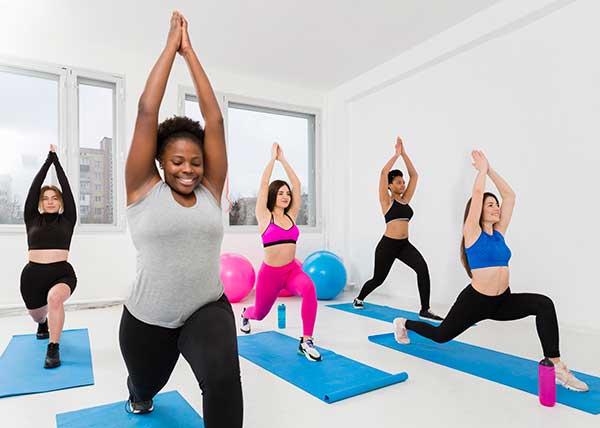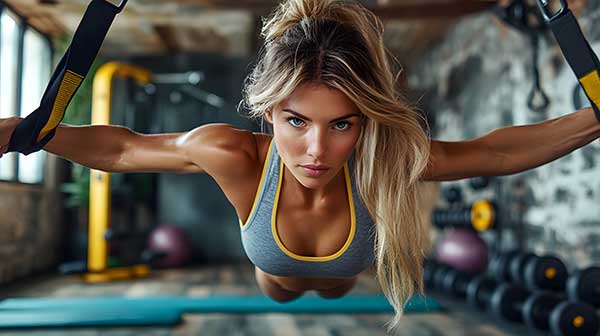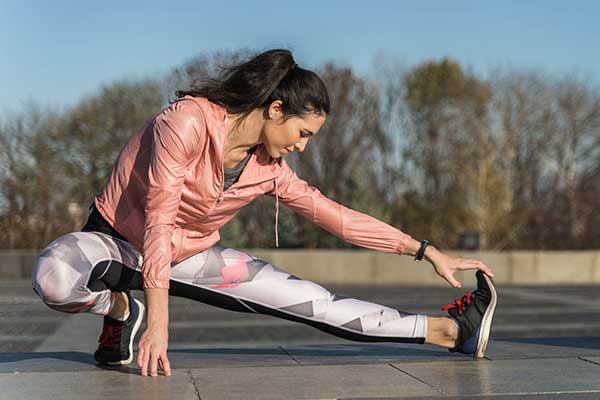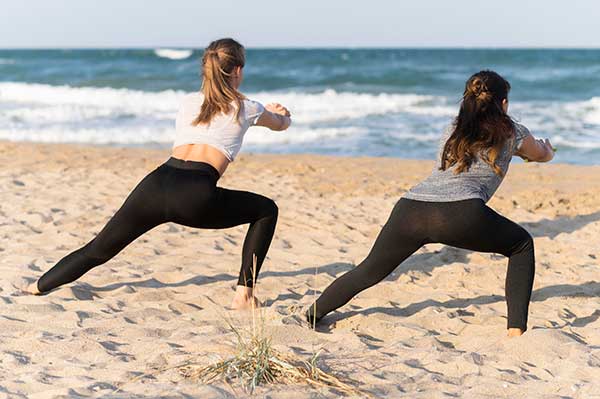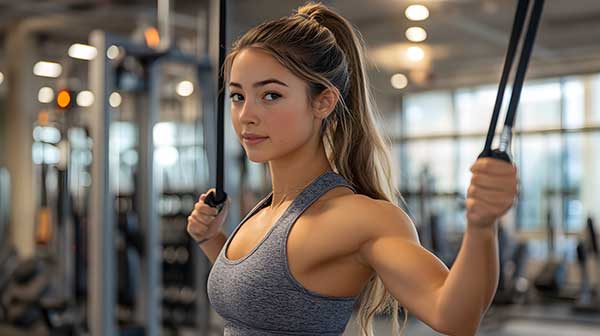Best Stretches to Improve Flexibility
Flexibility is often overlooked in the pursuit of fitness, but it plays a crucial role in overall health and well-being. Imagine being able to reach down to tie your shoes without feeling stiff or struggling to keep up with an active lifestyle because of tight muscles. Flexibility allows for smoother movements, enhanced performance during workouts, and a reduced risk of injury. Whether you’re an athlete or someone just starting out on their fitness journey, incorporating stretches into your routine can make all the difference.
But what are the best stretches to improve flexibility? This blog post will guide you through essential types of stretches and specific routines that target both lower and upper body flexibility. Let’s dive into how stretching can transform not only your physical abilities but also how you feel every day!
The Importance of Flexibility and Stretches
Flexibility is more than just a physical attribute; it’s key to maintaining an active lifestyle. When your muscles and joints are flexible, everyday movements become easier and more efficient.
Regular stretching helps prevent injuries by keeping muscles loose and ready for action. Tight muscles can lead to strains or sprains, especially during exercise or sports activities.
Moreover, flexibility can improve posture. Many people sit for long hours at work, leading to tightness in specific areas like the hips and back. Stretching counteracts this tension, helping you stand taller and feel more balanced.
In addition to physical benefits, stretching has mental advantages too. It fosters relaxation and reduces stress levels by promoting blood flow throughout the body. Engaging in simple stretches can serve as a calming break during hectic days, enhancing both your mood and productivity.
Types of Stretches
When it comes to stretching, there are several types to consider. Each serves a different purpose and can enhance your flexibility in unique ways.
Static stretches involve holding a position for 15-60 seconds. This type is ideal for cooling down after workouts, helping muscles relax.
Dynamic stretches, on the other hand, incorporate movement. They prepare your body for activity by gently warming up muscles through controlled motions.
Ballistic stretching uses momentum to push beyond the normal range of motion. While effective, this method requires caution as it can lead to injury if not done correctly.
Proprioceptive Neuromuscular Facilitation (PNF) combines passive stretching with isometric contractions. It’s often used in rehabilitation settings or advanced training programs due to its effectiveness in increasing flexibility.
Understanding these various techniques will help you choose the best approach for your needs and goals.
Best Stretches for the Lower Body
To enhance flexibility in the lower body, several effective stretches can make a significant difference. The seated forward bend is a favorite; it targets the hamstrings and lower back. Simply sit with your legs extended and reach for your toes, feeling that gentle pull.
The butterfly stretch is another excellent choice. Sit on the floor, bring your feet together, and let your knees fall to the sides. This opens up the hips beautifully.
Don’t overlook lunges. A step forward into a lunge position not only stretches hip flexors but also strengthens them. Add a twist to deepen that stretch.
Consider incorporating pigeon pose from yoga into your routine. It’s fantastic for opening up tight hips while stretching glutes effectively. Each of these stretches contributes uniquely to improved flexibility in the lower body, making them essential additions to any regimen focused on mobility and wellness.
Best Stretches for the Upper Body
To enhance upper body flexibility, a variety of stretches can be incredibly beneficial. Start with the chest opener. Stand tall and clasp your hands behind your back, gently pulling down while lifting your chin. This stretch expands the chest and shoulders, counteracting slouching.
Next is the shoulder stretch. Bring one arm across your body at shoulder height. Use the opposite hand to press it closer for a deeper release in tightness around those muscles.
Don’t forget about tricep stretches as well! Raise one arm overhead and bend at the elbow, reaching down towards your back. This move helps alleviate tension from long hours spent typing or on screens.
Incorporate neck rolls into your routine. Slowly roll your head in circles to ease stiffness that often goes unnoticed but affects overall mobility significantly. These simple yet effective movements promote better range of motion and comfort throughout daily activities.
Tips for Proper Stretching Technique
Proper stretching technique is essential for maximizing benefits while minimizing injury risk. Start by warming up your muscles with light cardio for about five to ten minutes. This prepares your body and enhances flexibility.
When stretching, focus on controlled movements rather than bouncing. Bouncing can lead to strains and injuries. Instead, hold each stretch gently for 15 to 30 seconds.
Listen to your body; never push through pain. If you feel discomfort, ease off the stretch until it feels comfortable again. Breathing deeply helps relax your muscles and increases oxygen flow.
Incorporate a variety of stretches targeting different muscle groups. Balance static stretches with dynamic ones for overall flexibility improvement.
Ensure you’re hydrated before starting any stretching routine. Proper hydration supports muscle function and recovery, enhancing the effectiveness of your efforts in improving flexibility.
Incorporating Stretching into Daily Routine
Making stretching a part of your daily routine doesn’t have to be complicated. Start small, and you’ll soon notice the benefits.
Consider setting aside just five minutes each morning. Stretching first thing can energize your body and mind for the day ahead. Simple movements like toe touches or shoulder rolls are effective.
You can also integrate stretches throughout your workday. Stand up during breaks to perform seated twists or neck stretches. This not only helps with flexibility but also reduces stiffness from sitting all day.
Before bedtime, dedicate time to winding down with gentle stretches. A calming routine prepares both body and mind for restful sleep.
Remember, consistency is key! Incorporating stretching into various parts of your day ensures it becomes a natural habit rather than a chore. With patience and practice, you’ll see noticeable improvements in flexibility over time.
Conclusion
Flexibility plays a crucial role in overall health and wellness. It enhances your physical performance, reduces the risk of injury, and improves posture. Incorporating stretching into your routine can bring numerous benefits that extend beyond just increased flexibility.
There are two primary types of stretches: static and dynamic. Static stretches involve holding a stretch for an extended period, while dynamic stretches incorporate movement to prepare muscles for activity. Both types have their place in a balanced fitness regimen.
For the lower body, consider incorporating lunges, hamstring stretches, and quadriceps stretches into your routine. These exercises target key muscle groups like hips, thighs, and calves, promoting better mobility.
Upper body flexibility is equally important. Stretches such as shoulder rolls, tricep overheads, and chest openers can help alleviate tension in the back and shoulders while enhancing overall upper body range of motion.
Proper technique is essential when stretching to avoid injuries or strain. Always warm up first with light activity before you begin your stretching routines. Focus on breathing deeply during each stretch to promote relaxation.
To make stretching part of your daily life, choose times that fit smoothly into your schedule—maybe after workouts or even while watching TV at home. Set reminders if necessary; consistency will yield the best results over time.
Improving flexibility through regular stretching can lead to enhanced performance in various activities—from sports to everyday tasks—making it an invaluable practice for anyone looking to stay active.
- About the Author
- Latest Posts
Johnnie D. Jackow Sr., the founder and CEO of Total Body Fitness, Worldwide, has a long-standing career in the fitness industry. He began as a certified personal trainer in the mid-90s and soon after authored his first weight loss book in 1998. This led to the launch of Total Body Fitness, Nationwide in the USA at the same time. Johnnie gained recognition as the fitness guru of his time, running infomercials on local TV late at night in Houston, Texas. Over the years, he has helped more than 40,000 individuals from all over the world achieve their health and fitness goals. With over 60,000 hours of documented training in integrative functional medicine, he completed his PhD in human physiology in 2010. His primary objective is to assist people in reaching their health and fitness goals through alternative approaches rather than relying solely on conventional medicine and pharmaceutical drugs. Today, with almost three decades of experience under his belt, Johnnie continues to be a leader in health and fitness.

